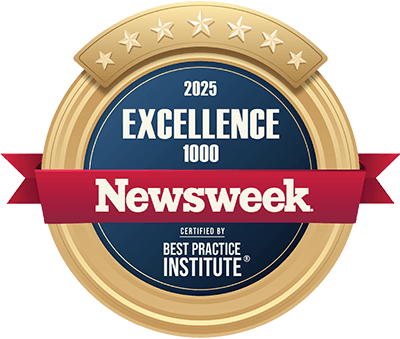Software Maintenance Costs
How to Estimate and Optimize
Learn the key factors that affect the cost of software maintenance and examine the impact of different sourcing models. ScienceSoft also shares sample estimates for apps of various complexity and outlines best practices for software maintenance cost optimization.
Software Maintenance Costs in Brief
Software maintenance is the essential phase of SDLC, which may constitute up to 90% of the software's total cost of ownership (TCO).
Relying on 18 years of experience in software maintenance services, ScienceSoft helps estimate and optimize maintenance costs for businesses in 30+ industries. Use our online cost calculator to learn the maintenance budget for your case.
Examples of Software Maintenance
Corrective maintenance
Corrective maintenance constitutes around 20–25% of the total maintenance effort or more if the software is relatively new or still undergoing development.
Adaptive maintenance
Adaptive maintenance accounts for about 15–20% of the maintenance effort or more if changes in the software environment or regulatory requirements are frequent.
Preventive maintenance
Preventive maintenance makes up 10–15% of the total maintenance effort.
Perfective maintenance
Perfective maintenance makes up 25–30% of the maintenance effort or more if there is a strong focus on enhancing the software's features and usability.
Major Software Maintenance Cost Factors
Software maintenance costs may vary significantly depending on a project’s specifics. Among general factors that influence the total cost of software maintenance are:
- The type of software maintenance (corrective, adaptive, preventive, perfective), the chosen time coverage (8/5, 12/5, 24/5, 24/7), and the scope of maintenance activities.
- Software type, its complexity, availability and fault tolerance requirements.
- The number of application users.
- Availability of comprehensive software documentation (knowledge base).
- The maintenance team composition and the team members’ seniority level.
In addition, ScienceSoft recommends considering cost factors specific to the chosen sourcing model:
In-house software maintenance
- Talent recruitment that might recur in case of high turnover.
- Investments in the in-house staff training.
- Regular payment of salaries and fringe benefits, tax payments, etc.
Outsourced software maintenance
- The chosen pricing model (price per ticket, monthly subscription fee, T&M with a cap, mixed).
Sample Software Maintenance Cost Estimation
Depending on the software type, the number of users, and the required activities, monthly software maintenance costs may vary from $5,000 to $50,000+*. Below are monthly cost estimates for maintaining two different cloud-based solutions.
Mature enterprise app with a low volume of change requests
Cost: $5,000–$15,000*
Actively evolving customer-facing app with a high volume of change requests
Cost: $30,000–50,000*
*The estimates provided are not ScienceSoft's official pricing for the software maintenance services. We estimate the cost of each project individually, based on our clients' specific situations and needs.
Maintenance vs. Development Costs
The total cost of ownership (TCO) encompasses both maintenance and development. However, while development is a one-time process, software maintenance is ongoing for all software types.
According to ScienceSoft’s experience in custom software maintenance projects, maintaining complex on-premises enterprise software can consume 70–90% of the TCO, while a cloud-based app typically demands 30–60%.
How to Calculate Maintenance Cost?
Software maintenance costs primarily depend on your software's maturity level. The higher the frequency and volume of updates, the higher the costs will be. Other factors influencing maintenance costs include:
- Software infrastructure and purpose.
- Architecture complexity.
- The number of users and integrations.
- The range of maintenance activities.
Accurately Estimate Your Software Maintenance Costs
Please use our software maintenance cost calculator to get an estimate tailored to your needs.
Thank you for your request!
We will analyze your case and get back to you within a business day to share a ballpark estimate.
In the meantime, would you like to learn more about ScienceSoft?
- Project success no matter what: learn how we make good on our mission.
- 4,200 successful projects: explore our portfolio.
- 1,400+ incredible clients: read what they say.

Some Facts about ScienceSoft as a Software Maintenance Company
- Since 2007 in software maintenance and since 2012 in cloud services.
- 750+ experts on board.
- 62% of our revenue from the customers we serve for more than 2 years.
- Established partnerships with Microsoft, Amazon, Oracle, ServiceNow, and other global tech leaders.
- ISO 9001 and ISO 27001 certifications to ensure mature quality management and security of the customers’ data.
How to Optimize Software Maintenance Costs: 8 Ways Proven by ScienceSoft’s Engineers
We keep documentation simple yet highly detailed to reduce dependency on specific employees and save your time and money during the onboarding of new team members.
Rightsizing computing resources
ScienceSoft uses cloud optimization tools (e.g., AWS Compute Optimizer, Azure Cost Management and Billing, etc.) to identify the resources that can be downsized before they cause unnecessary spendings.
Regular code reviews and updates
ScienceSoft regularly reviews the code to spot and address issues before they can affect the whole system and escalate maintenance efforts. We also ensure that software and libraries are updated to the latest versions for optimal performance and security.
Terminating unused resources
We timely spot and terminate the unused resources to ensure you are not billed for them.
Bug tracking and issue management
For enhanced transparency and accountability in the maintenance process, we use bug tracking and project management tools to prioritize, manage, and monitor bug fixes and maintenance tasks. It eliminates overlooked issues and keeps every team member updated on the progress.
Updating instances to the latest generation
Leading cloud providers often introduce new-generation instances with enhanced performance and functionality. By updating the existing instances and rightsizing them based on your current needs, we achieve the desired performance at a lower cost.
Using reserved instances
We can help you reduce up to 75% of cloud fees via reserved instances. But first, we make sure that this option is feasible for you (e.g., the project should be long-term, the workload is predictable, etc.).
Deleting obsolete snapshots
We don't store all snapshots as, in most cases, only the latest ones are needed to recover the lost data.
ScienceSoft’s Agility in Software Maintenance
Sourcing Models for Software Support and Maintenance
In-house software maintenance
- Full control over the maintenance process.
- Possible lack of talents for specific maintenance activities.
- Expenses on staff training, tools licenses, etc.
- The need to establish the software maintenance process from scratch.
Fully outsourced software maintenance
- A fully managed team with required skills.
- Cooperation based on the most suitable pricing model.
- Transparent KPIs.
- Exposing your IT infrastructure to a vendor.
A mix of in-house management and outsourced support resources
- Sufficient control.
- A scalable team with the needed competencies.
- Efforts to establish collaboration between the in-house and outsourced teams.

About ScienceSoft
Headquartered in McKinney, TX, ScienceSoft is a global IT service provider with representative offices in seven countries across three continents. Since 2007, we have been helping customers retain and improve their software performance and availability, as well as optimize underlying infrastructure costs. Holding ISO 9001 and ISO 27001 certifications, we employ robust quality management and guarantee the security of our clients' data.



